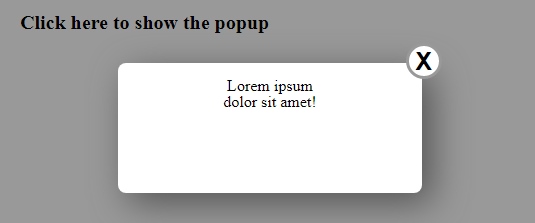

If this feature is set, the browser will omit the Referer header, as well as set noopener to true. When noopener is used, non-empty target names, other than _top, _self, and _parent, are treated like _blank in terms of deciding whether to open a new browsing context. If this feature is set, the new window will not have access to the originating window via Window.opener and returns null. Specifies the distance in pixels from the top side of the work area as defined by the user's operating system where the new window will be generated. Specifies the distance in pixels from the left side of the work area as defined by the user's operating system where the new window will be generated. Specifies the height of the content area, including scrollbars. Specifies the width of the content area, including scrollbars. To enable the feature, specify popup either with no value at all, or else set it to yes, 1, or true.Įxample: popup=yes, popup=1, popup=true, and popup all have identical results. Note: Specifying any features in the windowFeatures parameter, other than noopener or noreferrer, also has the effect of requesting a popup. If popup is not enabled, and there are no window features declared, the new browsing context will be a tab. The UI features included in the popup window will be automatically decided by the browser, generally including an address bar only. If this feature is enabled, it requests that a minimal popup window be used. The following options are supported: popup

These features include options such as the window's default size and position, whether or not to open a minimal popup window, and so forth. windowFeatures OptionalĪ string containing a comma-separated list of window features in the form name=value - or for boolean features, just name. This name can be used as the target attribute of or elements. The special target keywords, _self, _blank, _parent, and _top, can also be used. If the name doesn't identify an existing context, a new context is created and given the specified name. target OptionalĪ string, without whitespace, specifying the name of the browsing context the resource is being loaded into. If an empty string ( "") is specified or this parameter is omitted, a blank page is opened into the targeted browsing context.

HTML OPEN IN POPUP WINDOW WINDOWS
Doing this ensures that new windows aren't going to be popping up every time a user clicks on a link. Then each link that contains target="external" will open in that window/tab. Then all URLs will load in that same tab (as long as you use the same name).įor example, if you have a policy of loading all external links in a separate tab, you could call that tab, say, external. Instead of calling your window _blank, you can give it a name of your choosing. Users could avoid clicking on links if a blank window opens every time they click. This could become quite annoying for the user-especially if you have many links that each open in their own tab or window. If you have many links, and you add target="_blank" to each one, they will all open in their own blank window. As the above example demonstrates, to open a link in a new window, you simply add target="_blank" to the anchor tag.


 0 kommentar(er)
0 kommentar(er)
